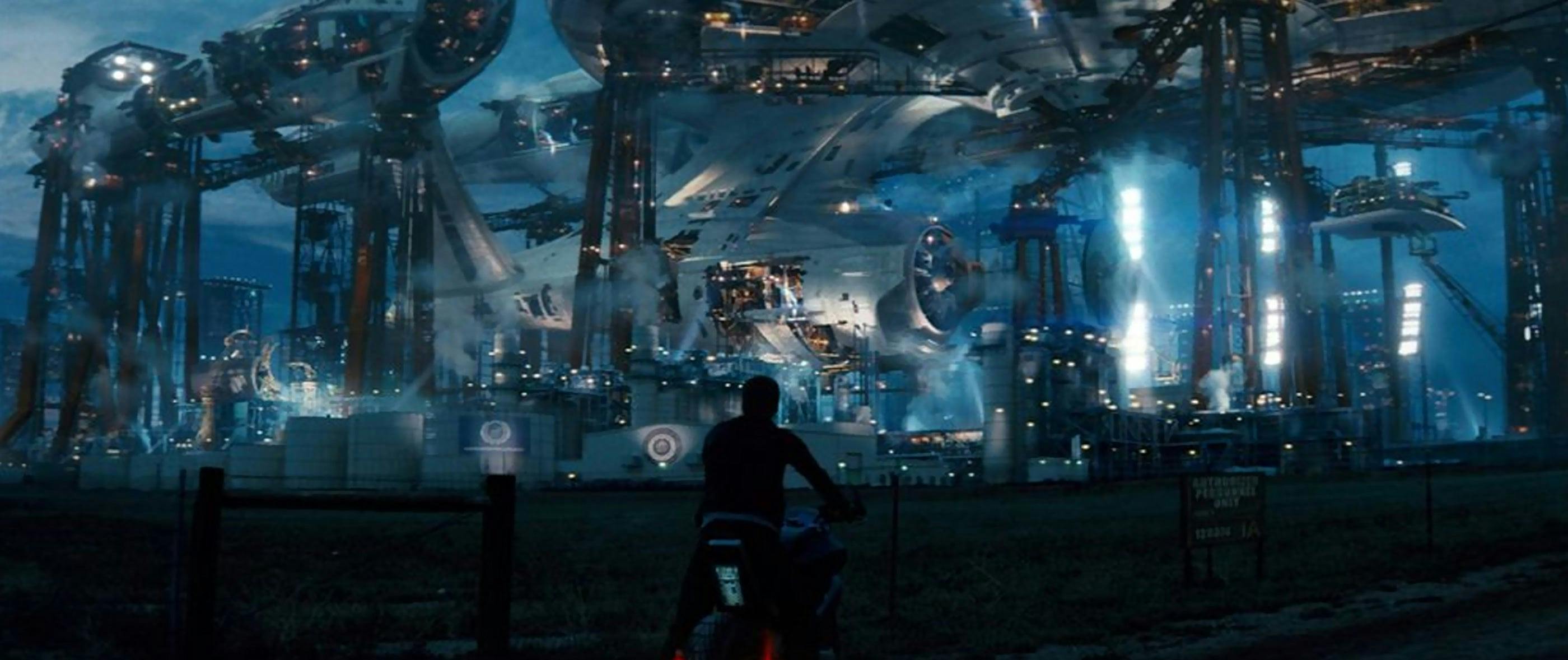
When Star Trek: Discovery debuts on CBS All Access in May 2017, the franchise will return to television for the first time since Enterprise's cancelation 12 years ago. The show will be set in 2255, a year after the first The Original Series pilot, "The Cage," and a decade before the second, "Where No Man Has Gone Before." Little is known about the premise, but during a 2016 Television Critics Association panel, Bryan Fuller, Discovery's original showrunner, announced that the first season would incorporate "an incident in the history of Starfleet that had been talked about [during the 1960s TV series] but never fully explored."
That got fans talking. In Star Trek's fictional history, only two significant events to date have been set in 2255. The first is the signing of the Treaty of Armens, from The Next Generation's "The Ensigns of Command," which ceded several Federation planets to the Sheliak, while the other is James T. Kirk's first planetary mission to the planet Neural. It remains to be seen what Fuller meant with his comment—but while we wait to find out, let's examine the status of the Trek universe in 2255. We have no idea what the show's premise will be, but we do know a great deal about the universe in which it will take place.
The United Federation of Planets and Starfleet
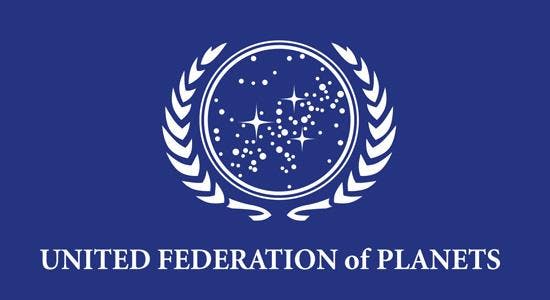
The Federation was founded by Earth, Vulcan, Andoria, and Tellar Prime in 2161, 94 years before Discovery's first season, which means the series will begin six years prior to that event's centennial anniversary. By 2255, Earth and the Federation had made first contact with many worlds, and had established such colony planets as Deneva, Draylax, Janus VI, the Lunar Colonies, the Martian Colonies, Proxima Colony, Terra 10, Terra Nova, and the Vega Colony.
Starfleet, functioning as Earth's space-exploration entity, had existed since before the Federation's founding, under the names United Earth Space Probe Agency (UESPA) and Starfleet Command. Starfleet's launch date is unknown, but a reasonable conjecture can be made. Jonathan Archer had considered joining the Earth Cargo Service before Starfleet's formation; since Archer graduated from college in 2134 and was already in Starfleet in 2136, this would seem to set its foundation circa 2135. By 2255, Starfleet had thus been in operation for approximately 120 years. As it happens, this jibes well with Enterprise's series bible, which claimed that Starfleet, by 2151, had existed for "less than twenty years."
The Klingon Empire
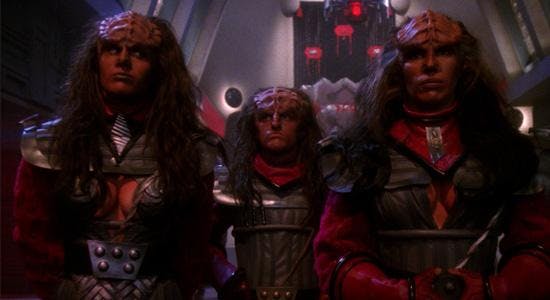
Earth's first contact with the Klingons occurred in April 2151, when Archer's efforts to save the life of a Klingon courier inadvertently dishonored the latter, resulting in enmity between the Empire and Earth that would last for more than a century. The situation escalated to a state of cold war around 2223, with frequent battles over disputed territories being fought for the next 70 years until the signing of the Khitomer Accords. In 2245, this culminated in the Battle of Donatu V, a brush war fought near Sherman's Planet. By the time of Discovery, ten years later, relations between the Federation and the Empire were marked by constant hostility.
During the 22nd century, the physiology of many Klingons was altered by the Augment virus after Klingon scientists attempted to improve their species using the DNA of genetically bred humans from the Eugenics Wars era. As a result of this virus, millions of Klingon warriors lost their cranial ridges, giving them a human-like appearance. The ridge-less Klingons were the dominant version in 2255, as evidenced by their appearance in TOS, though by the time of the V'ger incident, a mere two decades later, the ridges had already returned, so it is conceivable that ridged Klingons could have begun to re-emerge during Discovery's era.
The Romulan Star Empire
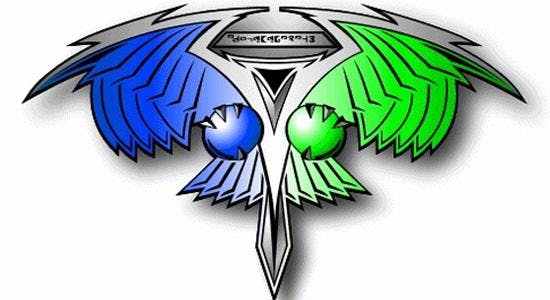
First contact between Earth and the Romulans occurred in 2152, when Archer's Enterprise found itself caught in a Romulan mine field. Four years later, the Earth-Romulan War began. Contact at that time was limited to audio, with the Romulans' physical appearance remaining a mystery for more than a decade, until the events of TOS's "Balance of Terror."
By 2255, almost a century had passed since the Romulans' defeat at the Battle of Cheron in 2160, which ended the war and culminated in the creation of the Romulan Neutral Zone. Throughout this century, little contact occurred between the two governments until the Narada, a Romulan ship from the future, attacked Federation worlds and Starfleet armadas, creating an alternate timeline in which the Romulans' similarity to the Vulcans thus became known decades earlier than in the prime reality.
The Kzinti

The felinoid Kzinti fought four wars with mankind by the late 21st century, losing all of them. Following the last of these wars, the Treaty of Sirius forbade the Kzinti from possessing any weapons other than police vessels. By 2255, the Kzinti held a great deal of resentment over this outcome, and sought a means of regaining the military might they once held.
The Cardassian Union
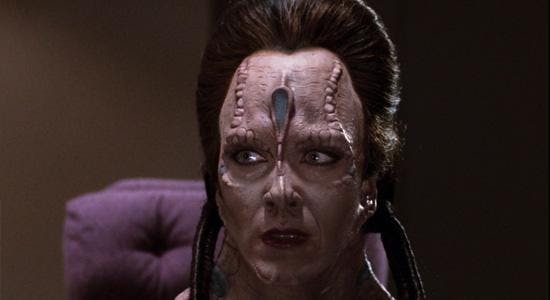
Little has been established regarding the Cardassians' status during the 23rd century, though their government at the time was called the Cardassian First Republic, and the era was known for its serialist poetry. First contact with the Federation is undated, but Archer's crew found a Cardassian corpse aboard an automated repair station in 2152, the Organians mentioned the species while observing Archer's crew two years later, and Uhura's alternate-reality counterpart ordered Cardassian sunrises at a bar in the 2009 film—in a scene coincidentally set in 2255.
The Ferengi Alliance
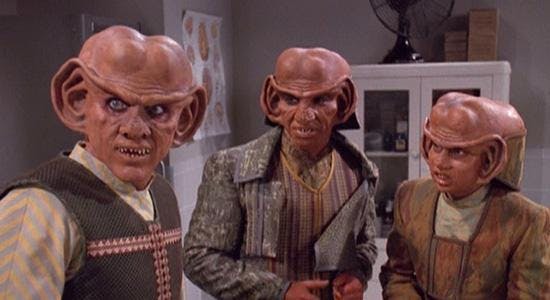
Officially, first contact with the Ferengi did not occur until the 24th century, in TNG's "The Last Outpost," so the odds do not favor the Federation encountering the diminutive profiteers in 2255. However, when space and time travel are involved, nothing is ever impossible. After all, Deep Space Nine revealed the spacecraft rumored to have crashed in Roswell, New Mexico, in 1947 to have contained Quark, Rom, and Nog, while Enterprise featured a Ferengi adventure set during Archer's era.
The Borg
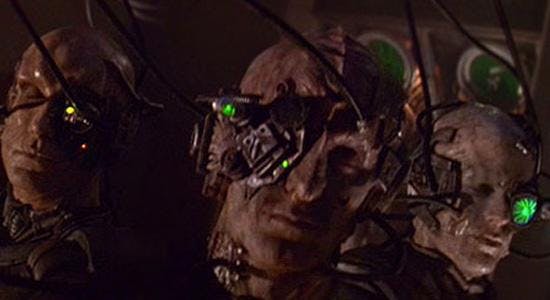
The Borg appear to have been unaware of Earth and its allies until the 24th century, so their presence in Federation space in 2255 seems unlikely as well. Given the nature of Borg technology, however, the possibility cannot be ruled out, particularly following the events of First Contact and Enterprise's "Regeneration," as the latter ended with a crashed Borg vessel broadcasting Earth's spatial coordinates to the Delta Quadrant via subspace.
The Gorn Hegemony

Although Archer's crew encountered a Gorn slave master in the mirror universe, first contact between the Gorn and the prime universe's Federation did not occur until the TOS episode "Arena," set in 2267. Thus, the Gorn remained an unknown species in 2255.
Characters
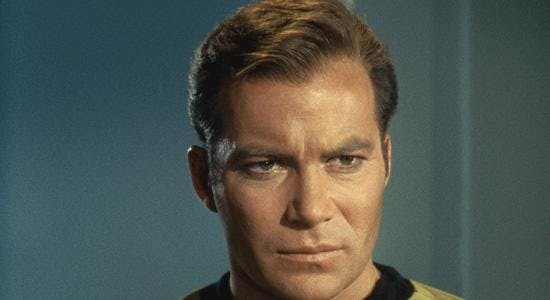
- James T. Kirk: Born in 2233, Kirk was 22 years old in 2255. Kirk served aboard the USS Republic as an ensign the year prior, then was promoted to lieutenant in 2255. He visited the planet Neural that same year on his first planetary survey mission, during which he befriended a native named Tyree.
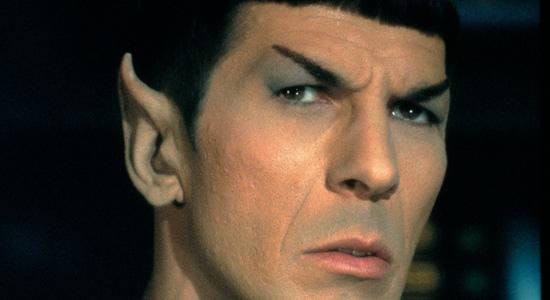
- Spock: Having been born in 2230, Spock was 25 years old in 2255. He took part in Enterprise planetary missions to Rigel VII and Talos IV in 2254, then remained among the starship's crew the following year.
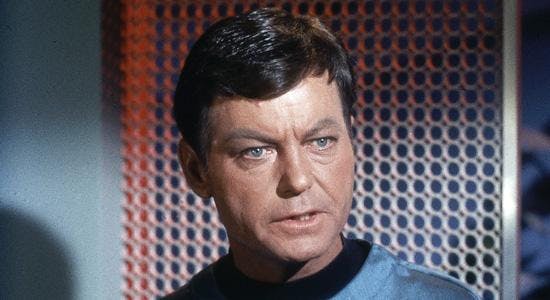
- Leonard McCoy: Born in 2227, Bones turned 28 in 2255, four years after leading an inoculation program on Dramia II. The year of his divorce from his wife in the prime reality is unknown, though he dated Nancy Crater in the mid-2250s; in the Kelvin timeline, the McCoys split up in 2255, inspiring Bones to join Starfleet in that reality.
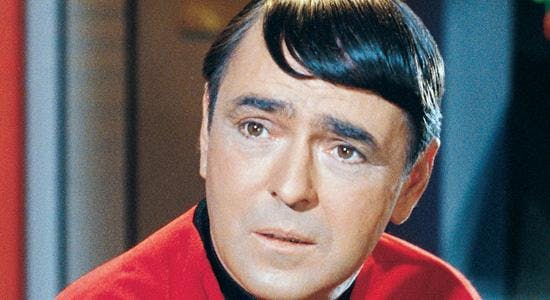
- Montgomery Scott: The Scottish engineer, born in 2222, was age 33 in 2255. He served aboard eleven vessels and as a freight-line engineering adviser between Deneva and the outlying asteroid belts, wrote several technical manuals, and drafted Starfleet Regulation 42/15, "Pressure Variances in IRC Tank Storage," though it is unclear whether these events occurred before or after 2255.
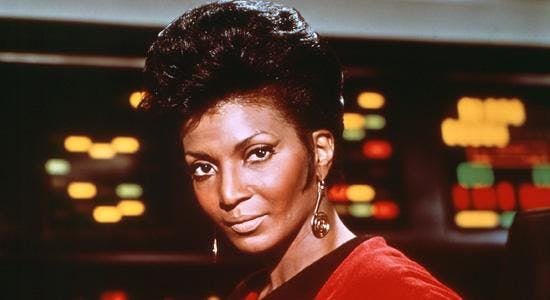
- Nyota Uhura: Uhura's age in 2255 is unknown, though actor Nichelle Nichols (born in 1932) was 34 years old when TOS debuted. Assuming the actor and character to have been the same age, that would make Uhura 23 in 2255. According to The Search for Spock, she joined Starfleet in 2265, a decade after Discovery's events, indicating a different career path in 2255.
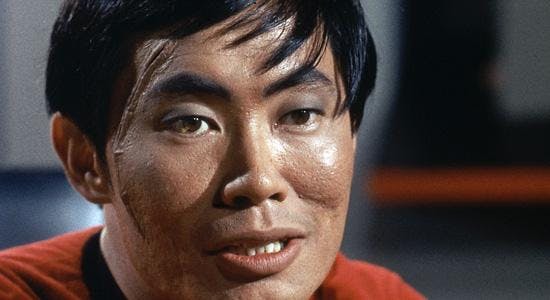
- Hikaru Sulu: Sulu's birth year also remains unestablished, but if he and actor George Takei (born in 1937) were the same age, then Sulu would have been 29 during TOS's first season, and thus 18 in 2255. Given his dual postings as Enterprise astrosciences department head and chief helmsman, he may have been studying either or both fields at the time.
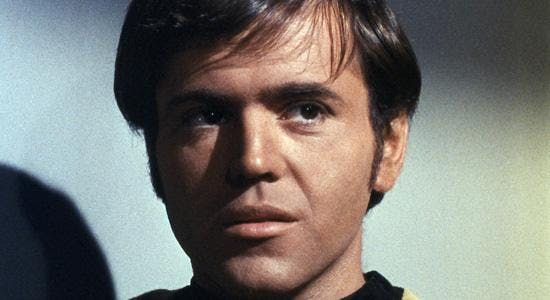
- Pavel Chekov: Having been born in 2245, the prime-reality Chekov was only 10 years old in 2255, according to dialogue in "Who Mourns for Adonais?" (the Kelvin timeline version of the character was apparently born four years prior, in 2241). Almost nothing is known about Chekov's childhood, other than his having been an only child in Russia.
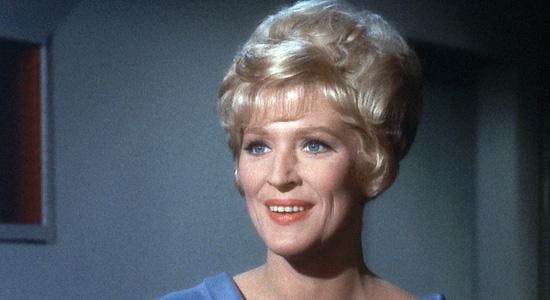
- Christine Chapel: The nurse's age is unestablished, but actor Majel Barrett-Roddenberry was born in 1932, pointing to an age of 34 for Chapel during the show's first season, and thus 23 in 2255. Since her fiancé, Roger Korby, vanished circa 2261, she may have been with him in 2255.
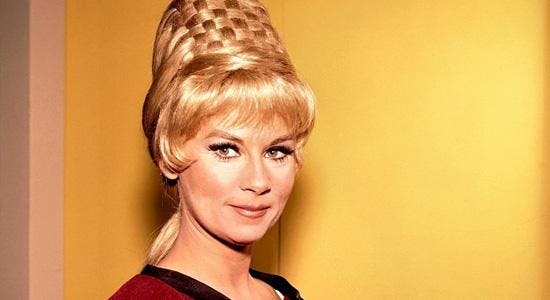
- Janice Rand: An early-draft script of TOS episode "Miri" established Rand's age as 24 in that story. This means she was born in 2242 and was, therefore, 13 years old in 2255.
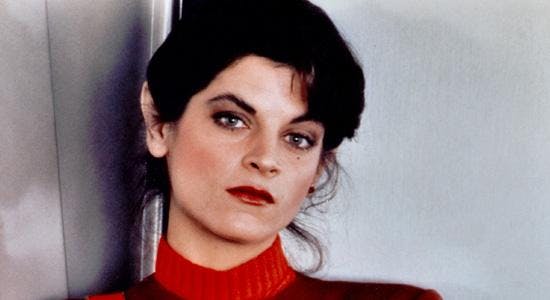
- Saavik: Spock's protégé did not attend Starfleet Academy until 2285, so she might not have yet been born in 2255, or may have been a young child. Actor Kirstie Alley was 31 years old when The Wrath of Khan hit theaters. If Saavik and Alley were the same age, she would have been only a year old at the time of Discovery.
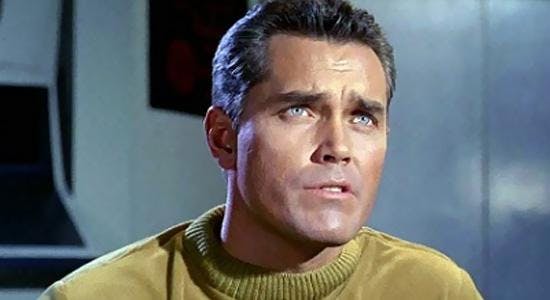
- Christopher Pike: Kirk's predecessor served as the Enterprise's captain from 2251 to 2262, and was thus in his fourth year of commanding that vessel in 2255. The Star Trek movie app revealed that he served aboard several vessels besides Enterprise, including the Olympus, Aldrin and Yorktown, but this may have applied only to the Kelvin timeline.
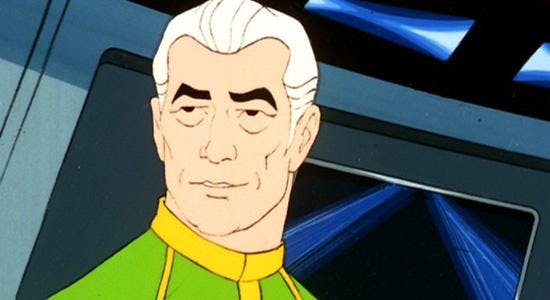
- Robert April: The Enterprise's first captain, born in 2195, had reached 60 years of age by 2255. He commanded the vessel for its first five-year mission, from 2245 to 2250, then retired and was promoted to commodore. During the era of Discovery, April worked as a Federation ambassador-at-large.
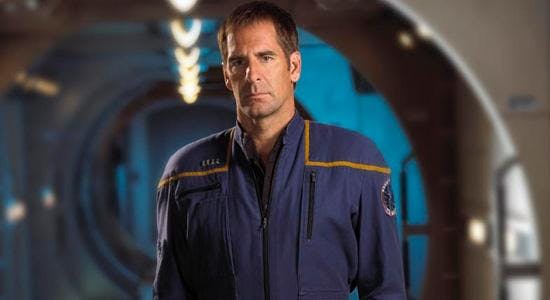
- Jonathan Archer: Were he alive in 2255, NX-01's commander, born in 2112, would have been 143 years old. Scotty's dialogue in the 2009 film indicated that Archer was indeed alive, an admiral, and still into beagles in an alternate 2258, so this is entirely possible. Unused text created for Archer's biographical display in "In a Mirror, Darkly, Part II" would have revealed that he died in 2245.
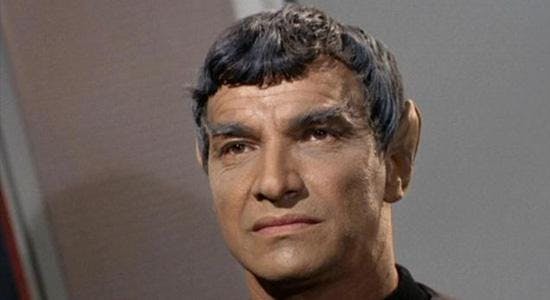
- Sarek: As a Vulcan, Sarek, born in 2165, would have been a young man of 90 in 2255. The esteemed ambassador was already married to Amanda Grayson for two decades by that point, and was estranged from both of his sons, Spock and Sybok.
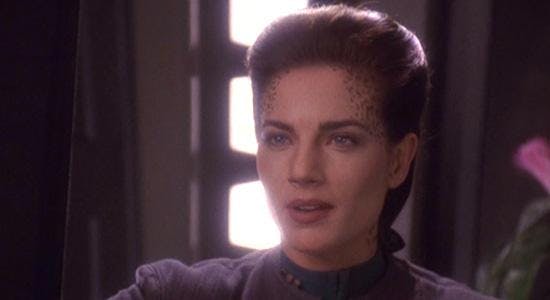
- Dax: The Trill known as Dax was born in 2018, making the symbiont 237 years old during Discovery's timeframe. As of 2255, Dax inhabited either its third host, Emony, or its fourth, Audrid. Since Emony dated McCoy in the 2240s as a young woman, she seems the most likely host in 2255.
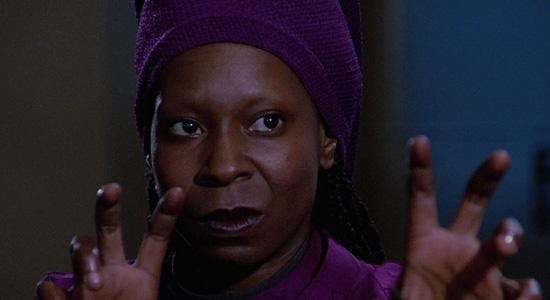
- Guinan: Although Guinan's age has never been established, she was already an adult by the 19th century, and would have been hundreds of years old by 2255. According to Q, Guinan went by another name in the 22nd century; it's unknown what name she used in the 2250s.
It will be another six months before Star Trek fans can finally watch Discovery. Whatever the show's premise may turn out to be (the writers and producers are being as tight-lipped about it as an Aldebaran shellmouth), Discovery will open up a largely unexplored decade in Trek history — the 2250s — and discovery has always been what Star Trek is all about.
Rich Handley is the editor of Hasslein Books and the author or co-author of several books about Watchmen, Planet of the Apes, Star Wars, and Back to the Future. He contributed to IDWs five Star Trek comic-strip reprint volumes and was a writer for Star Trek Communicator magazine.

